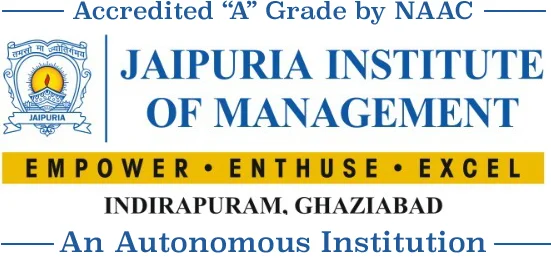Fiscal deficit, i.e. exactly equal to the borrowing and other liabilities, is a concern for the Indian economy since independence. During 1970s and 1980s, most portion of the fiscal deficit (known as ‘Budget Deficit’) was automatically financed by the Reserve Bank of India (RBI) through issuance of ad-hoc treasury bill. This automatically led to money supply growth and inflationary situation in the economy. When experts question the independency of the Central Bank, i.e. the RBI, then the government started borrowing from the open market through government securities (G-Sec) since 2001. Because of this, government has to offer market related interest rate to the public which is much higher than the interest rate offered to the RBI through ad-hoc treasury bill system. As government is borrowing more from the open market due to higher fiscal deficit (especially higher deficit in revenue account), less money is available in the open market for private investors leading to higher interest rate and ‘crowding out’ effect (i.e., increase in ‘public investment’ reduces ‘private investment’) in the economy. This reduces economic growth rate as ‘private investment’ is mainly growth oriented. Slow growth further leads to inflationary situation in the economy.
In the Budget at a Glance document of the current Union Budget 2020-2021, the fiscal deficit Budget Estimates for 2020-2021 target has been at 3.5 per cent of GDP (as against 3.8 per cent and 3.3 per cent of GDP in the Revised Estimates (RE) and Budget Estimates (BE) for 2019-2020 respectively) which is very difficult to achieve. This will be inflationary if we will look into the effective revenue deficit (i.e., revenue deficit minus grants in aid for creation of capital asset) figure. It is noticed that there is higher effective revenue deficit, i.e. Rs. 307807 crore (1.5 per cent of GDP) in 2019-2020 (RE) from Rs. 277686 crore (1.3 per cent of GDP) in 2019-2020 (BE). The effective revenue deficit for 2020-2021 (BE) is still higher (i.e. Rs. 402719 crore (1.8 per cent of GDP)) as compared to 2019-2020 (RE) whose figure mentioned above. Higher effective revenue deficit means total revenue expenditure (including grants in aid for creation of capital asset) is more than the revenue receipts. The revenue expenditure is inflationary in nature as it increases public’s disposable income and their purchasing power without creating assets in the economy. Increases cost of raw materials, prices of products and further increase in inflation. Also increases wage rate and nominal interest rate due to higher inflation rate.
From the Medium-Term Fiscal Policy cum Fiscal Policy Strategy Statement as per FRBM Act, it is mentioned that the revenue expenditure is expected to be 87.1 per cent of Total Expenditure in the 2019-2020 (RE) before coming down to 86.5 per cent in 2020-2021 (BE). This percentage of 86.5 per cent is quite alarming and seems to create inflationary situation in the economy. The major components of the revenue expenditure of the Government include Interest payments, Subsidies, Salaries, Pensions, Defence revenue expenditures, expenditure on Central Police Organizations and the revenue transfers made to the State/UT Governments in the form of Finance Commission grants, Centrally Sponsored Schemes and Other Transfers. In the other transfers category is included the transfer to State Governments for compensating revenue losses on account of implementation of GST, the grants to Central autonomous bodies are also a substantial part of the Central sector schemes are also in the nature of revenue expenditure.
Interest payments constitute the largest component of Centre’s revenue expenditure. Interest payments expenditure was budgeted at Rs. 6,60,471 crore in 2019-2020 (BE) which was 33.7 per cent of revenue receipts. Even if Interest payment expenditure is expected to be lower in 2019-2020 (RE) at Rs. 6,25,105 crore but it is expected to constitute 33.8 per cent of revenue receipts, i.e. higher percentage as compared to BE figure. In 2020-2021, outgo towards interest payments is expected to be Rs. 7,08,203 crore which is higher at 35 per cent of revenue receipts.
Major subsidies such as for Food, Fertilizer and Petroleum, form a significant component of revenue expenditure. The expenditure on account of these items are estimated to reduce from the Budgeted level of Rs. 3,01,694 crore to Rs. 2,27,255 crore in 2019-2020 (RE). However, in 2020-2021 (BE), expenditure on account of subsidies is expected to be higher at Rs. 2,27,794 crore.
The Defence Services revenue expenditure constitute mainly, expenditure on salaries, other establishment related items including Stores, works related maintenance expenditures, transport and other miscellaneous expenditure. In 2019-2020 (RE), Defence Service revenue expenditure is estimated at Rs. 2,05,902 crore against the budgeted estimates of Rs. 2,01,902 crore reflecting an increase of 2 percent in RE over BE. In 2020-2021 (BE), the expenditure outlay under this head is budgeted at Rs. 2,09,319 crore which is 1.7 percent higher than 2019-2020 (RE). It is expected that expenditure on this component will increase by 7.5 per cent each year in medium term.
Revenue expenditure under Pension has three main components, i.e. civil pensions which caters to pension expenditure to all Ministries/Departments of the Union Government barring few exceptions, defence pensions and pensions under Department of Telecommunication. Pension expenditure in 2019-2020 (RE) is estimated to be Rs. 1,84,147 crore reflecting an increase of Rs. 9,848 crore over 2019-2020 (BE). This is mainly on account of payment of pension arrears of 2018-19. In 2020-2021 (BE), pension expenditure is budgeted to be Rs. 2,10,682 crore which reflects a growth of 14.4 per cent over 2019-2020 (RE).
From the above figures it is clear that the fiscal expansion is beyond the provisions of Section 4(2) of the FRBM Act, 2003. It is expected that government will never return to the path of fiscal consolidation in the medium term. An emerging economy like India cannot afford to lose its growth steam. At the same time, Government must sincerely commit to keep its fiscal deficit at sustainable levels to ensure inter-generational equity in fiscal management and control inflation.
Sadananda Prusty, PhD (Dean-Academics)
Jaipuria Institute of Management, Indirapuram, Ghaziabad




